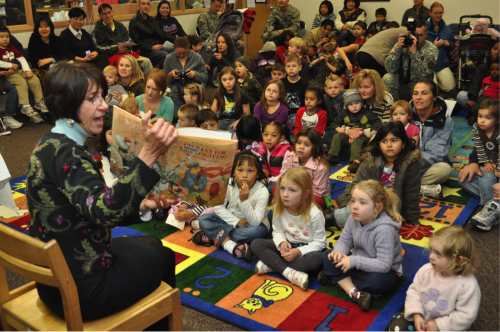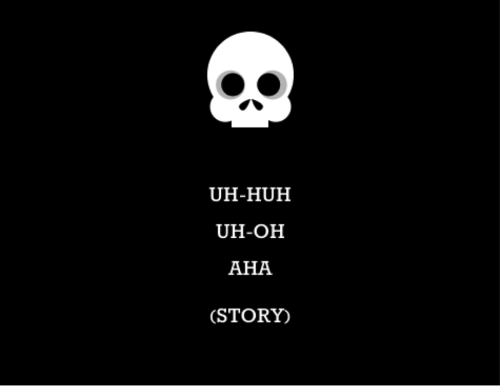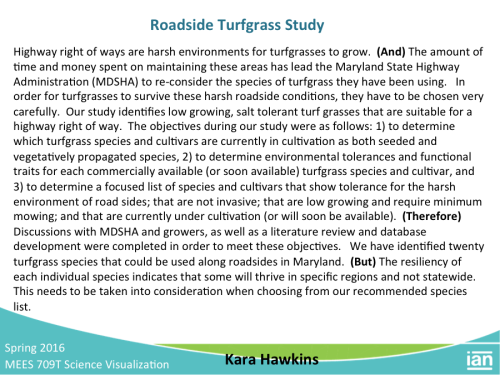Gather ‘round folks, it’s story time!
Kara Hawkins ·Kara Hawkins
Picture it: A library full of scientific journals and a scientist sitting in a rocking chair in the center of the room reading an article and sharing the visual elements around the audience. Surrounding him/her is a group of people, all ages, and all education levels. Their eyes never stray from the scientist, as they are spell bound. They hang on to each word And..But..Therefore.. The story has reached the end and no one thought they could enjoy science more!

Science and storytelling don’t often go together. [BUT] Without an engaging story we lose our audience very quickly. [THEREFORE] Using the ABT template will keep the audience engaged while learning about science.
Who knew that something as simple as using three powerful connecting words, ‘and’, ‘but’, ‘therefore’ could make communication more effective for your audience.
The DNA of storytelling from Science Needs Story on YouTube
So far in this class we have focused on visual elements, which has opened my eyes to all of the horrible graphs, charts, and diagrams around me. (It really should be a requirement that all scientists take a class like this!) Knowing that our brains are stimulated by visual elements is only half the battle when communicating science. If we don’t tell a good story we are as good as done! The second half of the battle is storytelling.
A good rule of thumb when writing a story is to replace ‘ands’ with ‘buts’. Imagine all of the scientific papers that we’ve read being transformed into stories…imagine that article review (mine is approaching 500 articles as we speak) being less tedious and more enjoyable…what a world it could be! Every paper could be an engaging narrative, add in some great visuals and BAM enjoyable reading!
The order of ABT statements is crucial.
- And-connects ideas
- But-creates conflict
- Therefore-offers resolution

In order to set up your story, you have to have some kind of conflict to resolve. It creates an argument. A hypothesis is basically an argument for or against something; all research of value must be for or against something. The goal is to get more people on board with your story. ABT is a narrative building block that can do just that. One person that hit that point home is, Randy Olson. He is a marine biologist turned independent filmmaker. He spends his time communicating about science and is a sought after speaker. The ABT theory is highlighted in his book, “Houston, we have a narrative”.
Here is a 10 minute video from Randy Olson Great Challenges Day at TEDMED 2013 from TEDMED on YouTube:
Randy Olson Great Challenges Day at TEDMED 2013
We had the pleasure of Randy sitting in on our class this week. For me, this was extremely helpful. He worked through some ABT statements with students and gave some great feedback.
So, let’s start with some basic ABT ideas and tips based on our discussion with Randy Olson…
- “The power of storytelling rests in the specifics.”
- Ask yourself: “What’s at stake? Why should anyone care?”
- Set up your problem quickly using ‘and’ & ‘but’. These can be considered characters so you want your audience to be introduced to them early in the story.
- The goal should be to find a single narrative in the research that you are doing. Can you see the over-arching problem?
- Try to form your ABT statement through a series of steps:
- Informational: Add all of your information into the ABT template. This will leave you with a large statement.
- Conversational: Make your statement very concise and simple. Take out the jargon and write it as if you are talking to a complete stranger in conversation. They will ask, “What do you do?” Your reply should be simple enough for them to understand.
- Revision: Use the formatting of the second step and add the specifics back in. Make sure everything in your statement is essential
- Make this a social process! Bring in colleagues and peers to review your ABT statement. This will only help strengthen your narrative. The review process can be extremely helpful (this is demonstrated in our class weekly)!
- ABT statements can be as long as your intuition tells you they should be. This is something that takes practice, as it is difficult to perform ABT effectively.
Keeping these ideas in mind, let’s look at my ABT abstract. My abstract initially read as:

First order of business is to change the order of my ABT, and to get to the ‘but’ quicker. Our initial assignment was to write an ABT abstract. However, for the purpose of the blog I’ll re-write an ABT statement with the feedback from our class. My ABT statement now says:
Harsh roadside conditions, and the need to cut down on time and money spent on maintenance has led MDSHA to re-consider the species of turfgrass planted along roads. But, not all of the species have the same resiliency throughout the state. [Therefore] We have identified twenty turfgrass species that could be used along roadsides throughout the state of Maryland.
I’m sure this could use a little more work. That’s where the peer review part comes in.
Now, as we all sit down to read some papers, we can re-write them in our heads using the ABT template!
For more information on Randy Olson, please see his website: http://www.randyolsonproductions.com/
Next Post > How to create conceptual cross-section diagrams
Comments
-
Christina Goethel 9 years ago
Really nice blog! I especially like your use of an ABT to describe the ABT, shows it can be used in so many situations and for all types of narratives. I also really enjoyed the "uh-huh, "uh-oh", and "aha" graphic; it brings out the sound effects we often use when we see and hear the words "And..but...therefore". It again speaks to the versatility of this approach as we are all likely familiar to those sounds.
-
MbS 9 years ago
Kara! SKULLS....thank you.
I think that the ABT structure is really important to environmental scientists in this way: the entire goal of environmental science is directed at
1) what is, and
2) what OUGHT to be (regarding our supporting and provisioning ecosystems).So much of what we do is for policy. We need to write so that stakeholders can penetrate to the story of first how bad things are and second, now, we can do something. That is our HUGE story now. We need to renew our home: that future generations can sit and tell stories.
Your revised ABT? Well, just get into an elevator with MD Governor Hogan. You can say this to him and BAM! Showing our (Republican) Gee-Man that hey, science? Is good for us. I can give you twenty turf grass species STAT. So, fund me maybe? Thanks.
Go girl. Armed with ABTs.
-
Noelle O. 9 years ago
I loved your storytelling blurb in the beginning-it definitely had me giggling! I think we can all agree that going over ABT the past couple weeks have been so helpful in our own research. It's amazing how few words we can cut our abstracts down to without losing too much information.I know there is always room for improvement, but I'm certainly excited to start applying ABT to topics other than my thesis research.
-
Dylan Taillie 9 years ago
What an awesome blog, Kara! Just imagining how much easier the papers I had to sift through for some of my Economics classes could have been had they followed a narrative structure. Your blogged really summed up our class nicely and especially did a great job of summing up the knowledge that Randy dropped when he sat in on our class - makes ones project much more compelling when you tell someone at a cocktail party about it!
-
Kara Hawkins 9 years ago
Thanks for the kind words, everyone. I really enjoyed writing this blog!
-
Keota Silaphone 9 years ago
After several years of working on my research it was mentally challenging for me to simplify my ABT statement during class. It's not natural for me to make spontaneous changes. Randy forced me to remove the clutter, and bring back my original research intent which may have gotten lost over the years. After the tough mental exercise Randy put me through I was pleasantly surprised with my revised statement, and actually bought his book Houston, we have a narrative.

